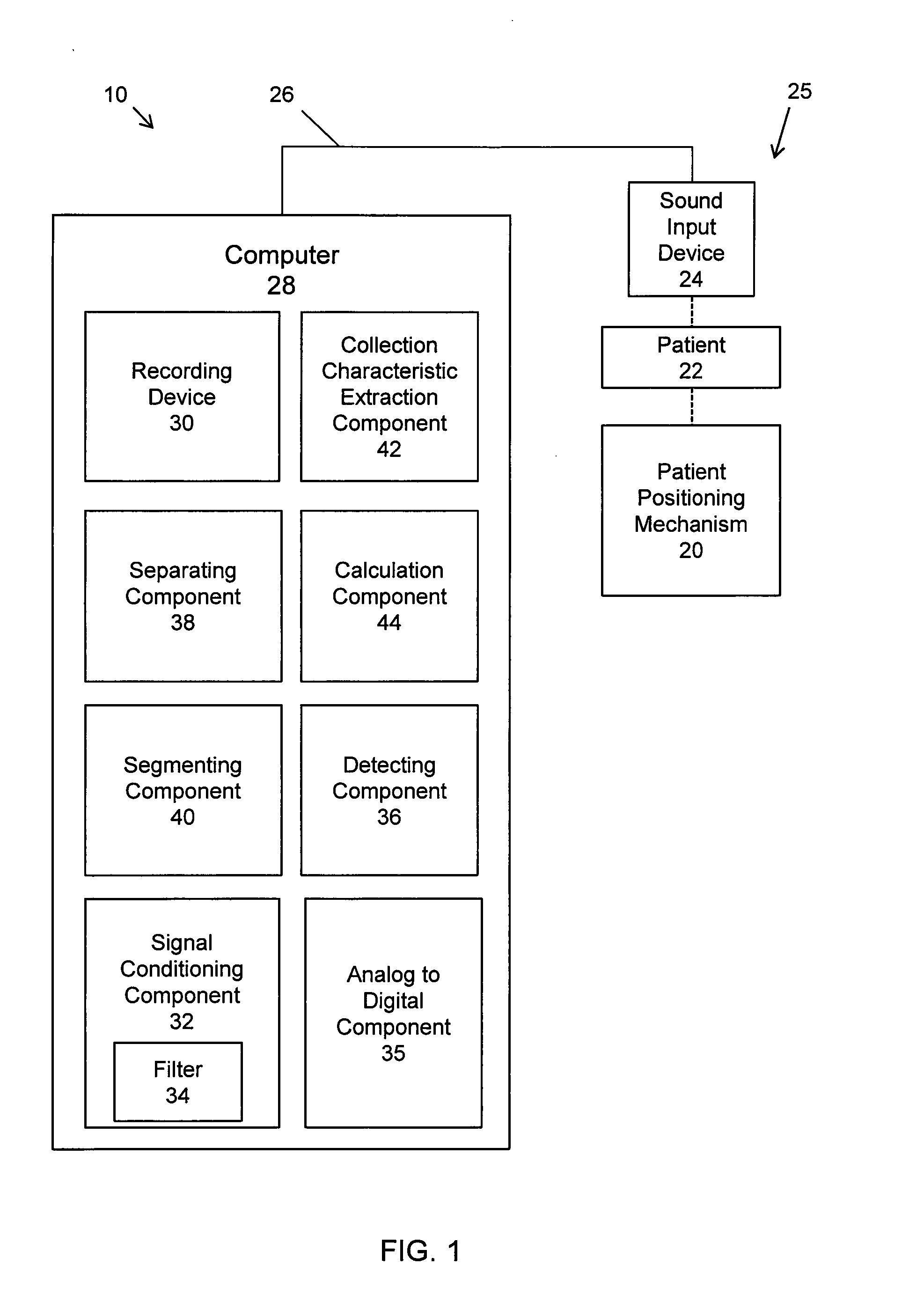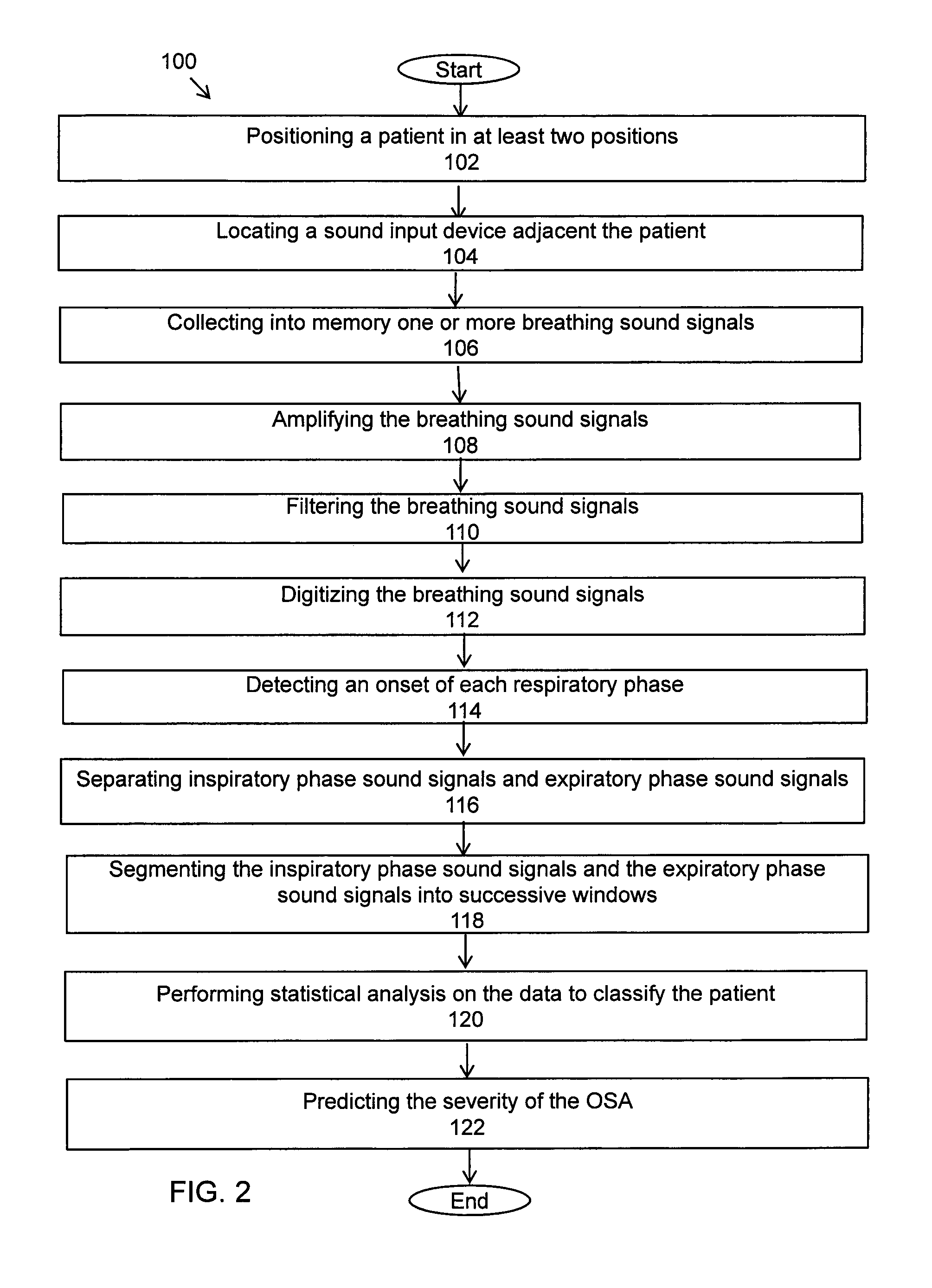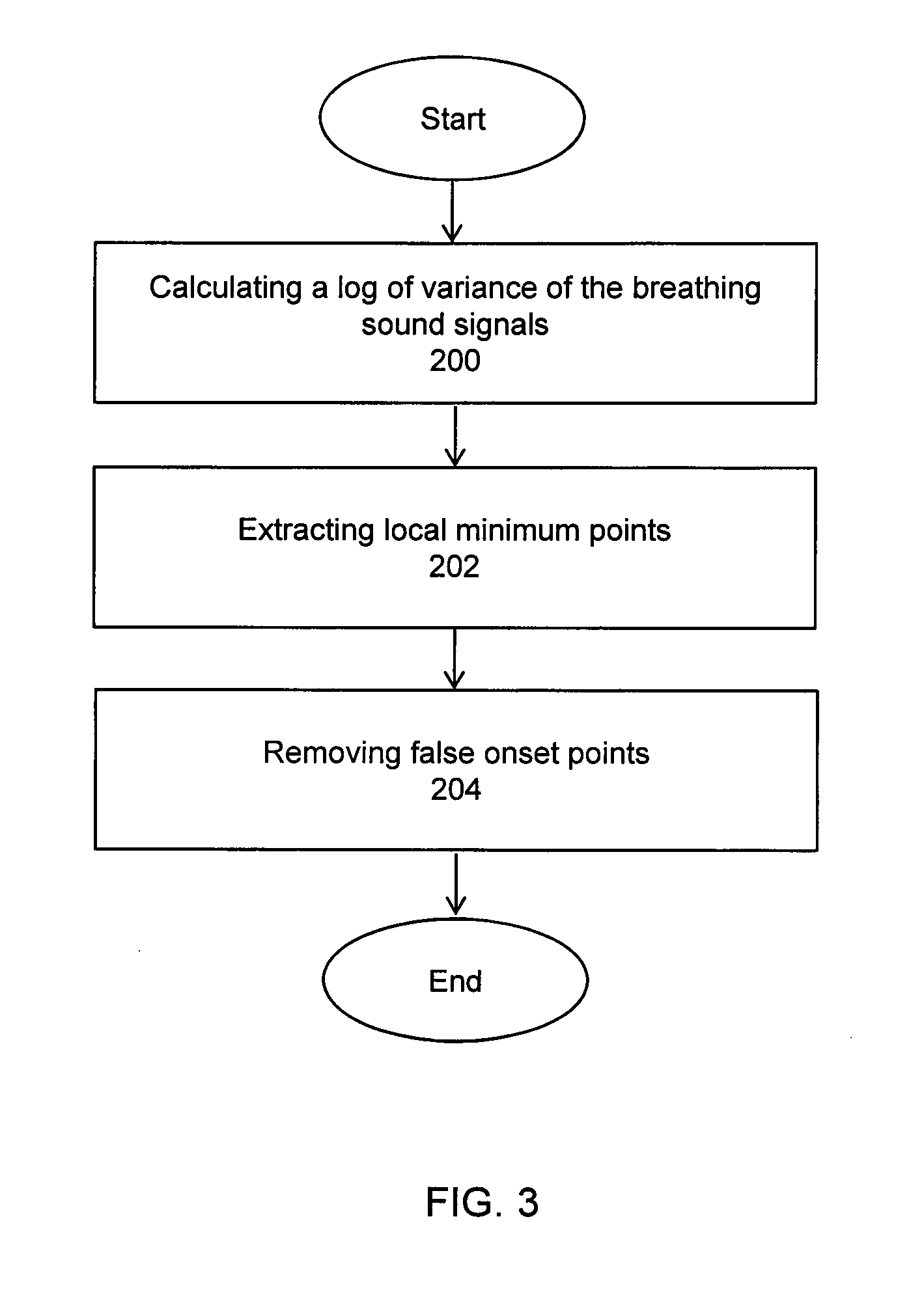System and methods of acoustical screening for obstructive sleep apnea during wakefulness
a technology of osa and acoustic screening, applied in the field of medical devices and methods, can solve the problems of osa patients having a defective ability to dilate the pharynx, and achieve the effect of improving the quality of life and reducing the risk of osa
- Summary
- Abstract
- Description
- Claims
- Application Information
AI Technical Summary
Benefits of technology
Problems solved by technology
Method used
Image
Examples
Embodiment Construction
[0026]FIG. 1 illustrates a system 10 for screening a patient for obstructive sleep apnea according to one embodiment of the present invention. The system 10 includes a patient positioning mechanism 20 for positioning a patient 22 in at least two positions. Preferably, the patient 22 may be positioned in a supine position to collect breathing sound data and an upright position to collect further breathing sound data. However, the number of positions that a patient 22 may be positioned and the breathing sound data collected at each of the patient positions may vary. A user of the system may collect breathing sound data while the patient 22 is in each of these positions.
[0027]One advantage of the present system 10 over conventional processes is that the system 10 collects breathing sound data while the patient 22 is in a state of wakefulness. Thus, the present system 10 is more user friendly and accessible than conventional processes which require overnight monitoring of the patient 22...
PUM
 Login to View More
Login to View More Abstract
Description
Claims
Application Information
 Login to View More
Login to View More - R&D
- Intellectual Property
- Life Sciences
- Materials
- Tech Scout
- Unparalleled Data Quality
- Higher Quality Content
- 60% Fewer Hallucinations
Browse by: Latest US Patents, China's latest patents, Technical Efficacy Thesaurus, Application Domain, Technology Topic, Popular Technical Reports.
© 2025 PatSnap. All rights reserved.Legal|Privacy policy|Modern Slavery Act Transparency Statement|Sitemap|About US| Contact US: help@patsnap.com



